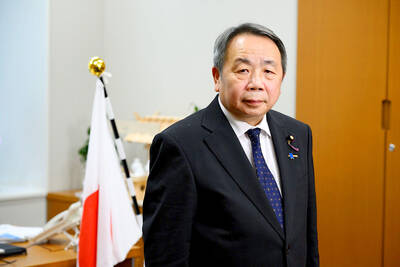The digestive tracts of most fish found in the waters around Pingtung County’s Hengchun Township (恆春) contain plastic waste, a study has shown.
National Donghwa University marine biology professor Chen Te-hao (陳德豪) said that about 95 percent of fish in a study conducted around 117 coral formations near the township contained microplastic — plastic fragments 5mm in size or smaller.
There is an urgent need for the reduced use of plastics, Chen said, adding that the public is advised against eating fish offal.
In the study, all fish were found to have no fewer than five pieces of microplastic in their systems, with the bodies of larger mahi-mahi (also known as the common dolphinfish) containing as many as 32 pieces of plastic waste.
What concerned Chen most about the results was that even fish that normally live at depths of between 180m and 640m below the ocean’s surface were shown to have consumed plastic.
The study also looked at 21 turtles of different species, including green sea turtles, olive ridley sea turtles and hawksbill sea turtles, between December 2017 and November last year, and found that nearly all of them had consumed plastic, Chen said, adding that his research team is now looking at oysters.
Despite the discovery that plastic waste consumption among marine life is more pervasive than previously thought, the plastic is unlikely to pass through the food chain to humans unless people consume fish offal, Chen said.
Even if the plastic does not enter the human food chain, its impact on marine life is apparent, he said, adding that some get entangled in larger pieces of plastic, sometimes fatally.
“There are people recycling plastic and organizing beach cleanups nationwide, but this is a reactive response. We need to go to the source of the problem — to urgently reduce, even eliminate, the use of plastic,” he said.

A strong continental cold air mass is to bring pollutants to Taiwan from tomorrow, the Ministry of Environment said today, as it issued an “orange” air quality alert for most of the country. All of Taiwan except for Hualien and Taitung counties is to be under an “orange” air quality alert tomorrow, indicating air quality that is unhealthy for sensitive groups. In China, areas from Shandong to Shanghai have been enveloped in haze since Saturday, the ministry said in a news release. Yesterday, hourly concentrations of PM2.5 in these areas ranged from 65 to 160 micrograms per cubic meter (mg/m³), and pollutants were

Taiwan’s armed forces have established response protocols for a wide range of sudden contingencies, including the “Wan Chun Plan” to protect the head of state, the Ministry of Defense (MND) said today. After US President Donald Trump on Saturday launched a series of airstrikes in Venezuela and kidnapped Venezuelan President Nicolas Maduro, concerns have been raised as to whether China would launch a similar “decapitation strike” on Taiwan. The armed forces regularly coordinate with relevant agencies and practice drills to ensure preparedness for a wide range of scenarios, Vice Minister of National Defense Hsu Szu-chien (徐斯儉) told reporters before a

EVA Airways on Saturday said that it had suspended a pilot and opened an investigation after he allegedly lost his temper and punched the first officer several times as their plane was taxiing before takeoff at Los Angeles International Airport. According to a report published on Thursday by The Reporter, the incident occurred after the flight’s Malaysian first officer tried to warn the Taiwanese pilot, surnamed Wen (文), that he was taxiing faster than the speed limit of 30 knots (55.6kph). After alerting the pilot several times without response, the first officer manually applied the brakes in accordance with standard operating

Japanese Councilor Hei Seki (石平) on Wednesday said that he plans to visit Taiwan, saying that would “prove that Taiwan is an independent country and does not belong to China.” Seki, a member of the Japan Innovation Party, was born in Chengdu in China’s Sichuan Province and became a naturalized Japanese in 2007. He was elected to the House of Concilors last year. His views on the Chinese Communist Party (CCP) — espoused in a series of books on politics and history — prompted Beijing to sanction him, including barring Seki from traveling to China. Seki wrote on X that he intends